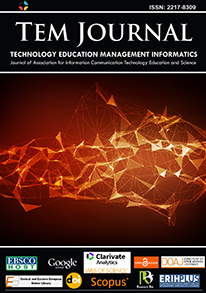Pearson Correlation and Multiple Correlation Analyses of the Animal Fat S-Parameter
Pearson Correlation and Multiple Correlation Analyses of the Animal Fat S-Parameter
Author(s): Muhammad Fikri Ikhwan, Wahidah Mansor, Zuhani Ismail Khan, Mohd Khairil Adzhar Mahmood, Aisah Bujang, Kamel HaddadiSubject(s): Information Architecture
Published by: UIKTEN - Association for Information Communication Technology Education and Science
Keywords: MNDT; microwave; animal fat; Pearson’s correlation; correlation; multiple correlations
Summary/Abstract: In specialised food products, the detection and identification of various sources of oils and fats are essential. Consumers are concerned about the adulteration of vegetable oils to avoid health problems and the risk of developing heart disease. There were a few cases where less expensive animal fat, in particular pork fat, was found in halal meals. The limitations of conventional methods for detecting pork in other meats can be overcome with the use of non-destructive methods. This study reveals the feasibility of using the microwave non-destructive testing method to identify animal fats. In the frequency between 8 GHz and 12 GHz, the microwave non-destructive testing method was used to obtain the S-parameters of the chicken, beef, and pork fats in the form of raw, baked, and oil. Single and multiple correlation analyses were then performed to identify the relationship between the animal fats and to differentiate them. The results of the Pearson correlation analysis show that for all animal fats, both raw and baked fat had a higher correlation value, which indicated they have the same or similar features. The different correlation values obtained from the multiple correlation analysis demonstrated that animal fats have distinct features, regardless of whether they are raw, baked, or liquid forms. The multiple correlation analysis is a more suitable technique to detect animal fats compared to the Pearson correlation analysis.
Journal: TEM Journal
- Issue Year: 13/2024
- Issue No: 1
- Page Range: 155-160
- Page Count: 6
- Language: English

